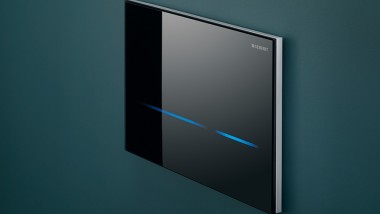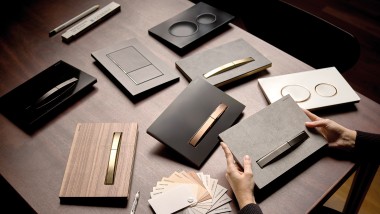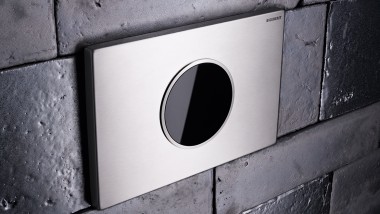Ways to save water in the bathroomReducing consumption when flushing and showering
Water is a precious resource that is scarce in many regions. Handling water carefully – particularly drinking water – is therefore of great importance.
Seven tips for saving water in the bathroom
Tip 1: Take a shower instead of a bath
Although a bath is nice and relaxing, it uses significantly more water than a shower. While a shower uses between 10 and 16 gallons on average, a bath can quickly use 40 to 50 gallons. A full bathtub even contains as much as 66 gallons.
In addition to saving water, showers also save energy as the water has to be heated up. A bath filled with hot water requires more fuel to heat the water than a shower.
Tip 2: Take shorter showers
But watch out, saving water and energy is only realistic when showers are kept short. Each minute, around 2.5 to 3 gallons of water run off down the drain on average. Showering for more than ten minutes can quickly use over 25 gallons of water. Taking a short shower is thus recommended.
Tip 3: Install a water-saving shower head
A water-saving shower head can reduce the flow rate of water in the shower significantly. In contrast to a conventional shower head, the water-saving version has a water flow rate of 1.5 to 2.0 gallons per minute, depending on the model. Many models are equipped with a stop button or different intensities. The flow of water can also be reduced using special tap enhancement solutions. The result is effective water saving in the bathroom!
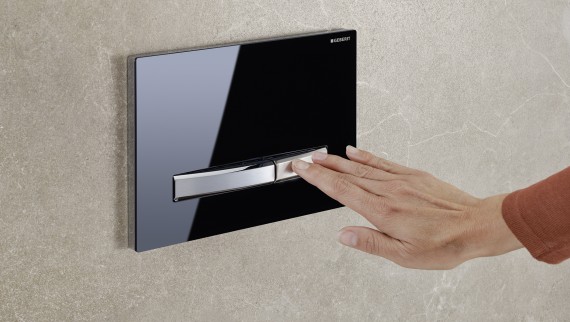
Tip 4: Use dual-flush actuator plates or a flush-stop pushbutton when flushing the toilet
Up to 2 gallons of water end up in the toilet on average with each flush. Modern toilet flushes are real water savers. By using Geberit dual-flush actuator plates, you can reduce the small flush to below 1 gallon. The full flush volume is set to 1.6 gallons. This is thanks to the Geberit flush valve in the toilet tank.
Ask your plumber about the optimal setting for your toilet. The flush-stop pushbutton is an alternative to dual-flush actuator plates and is used to manually interrupt the flushing process.
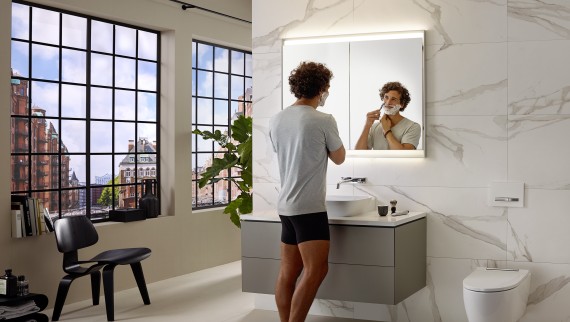
Tip 5: Don’t let the water run
Brushing your teeth, washing your hands or shaving all take time. While you usually need water at the beginning and end, there is no sense in letting the water run in between. This then flows directly down the drain without being used.
Turning the faucet off temporarily can save a considerable amount of water!
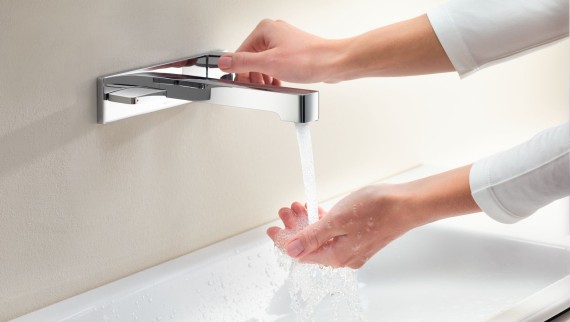
Tip 6: Use cold water instead of hot water
Preparing hot water uses additional energy. Furthermore, it always takes a while for the hot water to make its way from the water heater to the faucet. In the meantime, unused cold water flows out of the faucet.
Washing your hands quickly with hot water results in disproportionately high water consumption.
Tip 7: Repair any dripping faucets
A constantly dripping faucet doesn’t just get on your nerves, it also puts a strain on your water bill – and thus the environment. A dirty or worn seal is usually the reason for a leaky faucet. This seal can be cleaned or replaced with a minimum of fuss.
FAQs on water usage when showering and more
How high is the average water usage when showering?
When showering, the water usage depends on the length of your shower and the installed shower head. On average, showering uses 2.5 to 3 gallons of water per minute. Anyone showering for longer than ten minutes then uses about as much water as when taking a bath.
What should you watch out for when buying faucets?
How can hygienic coatings on bathroom ceramics save water?
Which bathroom is the right one for you?
But, what exactly are your needs? Is space, cleanliness or the design important to you? Would you like user-friendly products or would you prefer that extra degree of comfort that a toilet with bidet seat, for example, has to offer? Or would you prefer a universal design? No matter what your needs are, we simplify your daily routine with our clever bathroom solutions.
More space in the bathroom
Higher standard of cleanliness in the bathroom
More functional design in the bathroom
Greater comfort in the bathroom
Increased accessibility in the bathroom
Improved usability in the bathroom

Tip 4: Use dual-flush actuator plates or a flush-stop pushbutton when flushing the toilet
6 to 9 litres of drinking water end up in the toilet on average with each flush. Modern toilet flushes are real water savers. By using Geberit dual-flush actuator plates, you can reduce the small flush to below 3 litres. The full flush volume can be set to 4 litres. This is thanks to the Geberit flush valve in the cistern.
Ask your plumber about the optimal setting for your toilet. The flush-stop pushbutton is an alternative to dual-flush actuator plates and is used to manually interrupt the flushing process.
